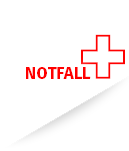For our referring physicians
Dear Colleagues,
We offer complete neuroradiological diagnostics, including functional imaging, such as representations of brain activation (fMRI), pathway imaging (DTI), and spectroscopy. Likewise, we perform all types of neuroendovascular interventions, such as embolization of aneurysms and angiomas, at the highest level. The interventions also cover a broad range of percutaneous spine and pain management interventions.
Stroke: Our concept of treating acute ischemic stroke is based on a combination of rapid on-site systemic fibrinolysis and subsequent mechanical intra-arterial treatment. In this process we employ technologies that we have developed, such as microstents and aspiration catheters.
Spasms: Diffuse vasospasm after subarachnoid hemorrhage (or in inflammatory disease) can usually not be prevented by balloon angioplasty or by means of short-term i.a. spasmolysis. Therefore, we prefer long-term treatment via a microcatheter placed in the neck vessels.
Stenosis: Large comparison studies have shown that surgical treatment is preferable in elderly patients, whereas stenting is superior in patients under 70 years of age due to better endovascular access. We developed a catheter technique that simplifies the handling of protection filter devices to such an extent that there is no longer any relevant difference to stenting without a protection device. Our interdisciplinary neurological-neuroradiological team takes care to prevent cerebral bleeding and hyperperfusion syndromes. Self-expanding microstents, drug-eluting stents, flow diverters, and stent grafts are used intracranially for stenoses or other vascular injuries.
Aneurysms: Small and complex cerebral artery aneurysms are treated with platinum coils, balloons, and stents. For each patient, an interdisciplinary decision is made as to whether neurosurgical or endovascular treatment is preferable.
Angioma and A-V dural fistulas of the brain, head, neck and spinal cord: With techniques that we partly developed, complete endovascular occlusions of these lesions can be achieved. Often the therapy is combined with neurosurgery or radiosurgery. For pretherapeutic evaluation and periinterventional monitoring, functional imaging, neuromonitoring, and intra-arterial tests are performed.
Diagnostic and interventional procedures
Our Neuroradiology division can offer you the following neuroradiological diagnostic and interventional procedures for your patients:
Our Neuroradiology division can offer you the following neuroradiological diagnostic and interventional procedures for your patients:
- Cranial diagnosis of the skull, including facial skull, neck, and spine axis using CT (256-row) and MRI (1.5 and 3 T)
- X-ray diagnosis
- Myelography
- CT-assisted interventions, e.g., facet-joint and sacroiliac joint infiltration and tissue biopsy (for example, paravertebral changes)
- Diagnostic angiography of the extra- and intracranial and spinal vessels
- Interventional angiography
- Treatment for acute vascular occlusion
- Mechanical thrombectomy of vascular occlusions of brain-supplying arteries or veins, also possible after i.v. lysis
- Stent implantation in cervical and intracranial vascular stenosis
- Treatment of vasospasm
- Vascular occlusive interventions
- Coiling of intra- and extra-cranial aneurysms
- Embolization of angiomas, fistulas, tumors, and acute bleeding
- Additional diagnostic procedures using magnetic resonance
- MR spectroscopy (MRS)
- Functional magnetic resonance imaging (fMRI)
- Diffusion tensor imaging (DTI) and fiber tracking
- Perfusion imaging (PWI)
- MR / CT angiography (MRA / CTA)
- Visualization of CSF leaks using intrathecal contrast media and MRI / CT
Appointment
Appointments can be arranged under the following telephone number
Division head secretariat:
Tel.: +49 (0) 3641 9 324761
Fax: +49 (0) 3641 9 324762
Referrals are accepted from all practices, hospitals, polyclinics, and emergency departments. Of course, you can also be treated as a private patient.


